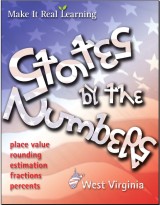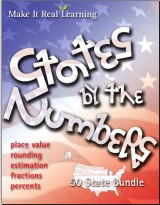- We know that:
498 ÷ 6 = 83.
How could you use this relationship (without using long-division) to discover the answer to:
491 ÷ 6 = ?
[No calculators allowed!]
I really like the question. To solve it, you need to TRULY understand what DIVISION and remainders are all about!
Now, let's think about it. Have you ever seen a pattern in division and remainders, like the one below?
20 ÷ 4 = 5
21 ÷ 4 = 5 R1, or 5 1/4
22 ÷ 4 = 5 R2, or 5 2/4
23 ÷ 4 = 5 R3, or 5 3/4
24 ÷ 4 = 6
25 ÷ 4 = 6 R1, or 6 1/4
26 ÷ 4 = 6 R2, or 6 2/4
27 ÷ 4 = 6 R3, or 6 3/4
28 ÷ 4 = 7
29 ÷ 4 = 7 R1, or 7 1/4
30 ÷ 4 = 7 R2, or 7 2/4
31 ÷ 4 = 7 R3, or 7 3/4
Students need to see and do such patterns when they are first learning basic division.
The pattern shows that every fourth number is evenly divisible by 4, and the ones in between have remainders 1, 2, or 3 in order. If the answer is given as a mixed number, the remainder is the numerator.
Back to 498 ÷ 6 = 83. Since 498 is divisible by 6, so is the number just 6 less than 498, or 492. In fact, 492 ÷ 6 = 82, or in other words, the quotient is one less than 83.
This makes sense when thinking of division as, "How many times does it fit?" If 6 fits into 498 exactly 83 times, then it fits into 492 one less time, or 82 times.
Continuing, also 492 − 6 = 486 is divisible by 6, and this time 486 ÷ 6 = 81.
We can now build the pattern from 486 onward until we have 491 on our list:
486 ÷ 6 = 81
487 ÷ 6 = 81 R1 or 81 1/6
488 ÷ 6 = 81 R2 or 81 2/6
489 ÷ 6 = 81 R3 or 81 3/6
490 ÷ 6 = 81 R4 or 81 4/6
491 ÷ 6 = 81 R5 or 81 5/6
492 ÷ 6 = 82
So, 491 ÷ 6 = 81 R5 or 81 5/6. Problem solved.








